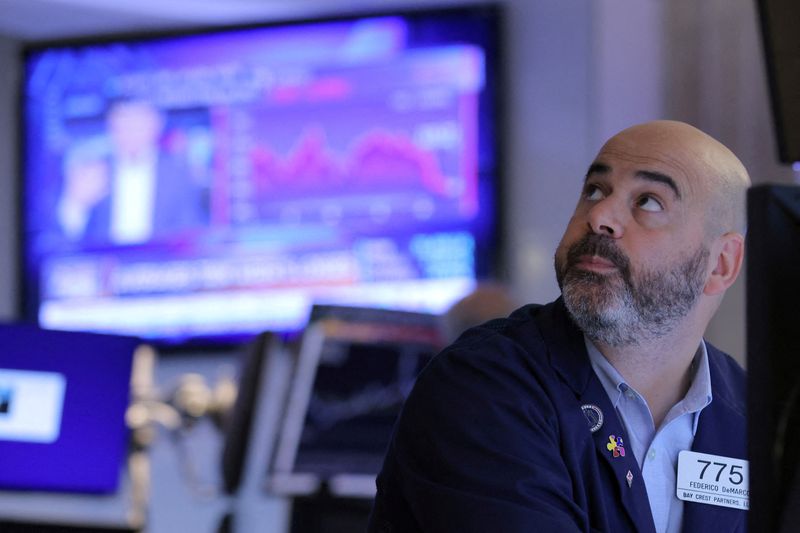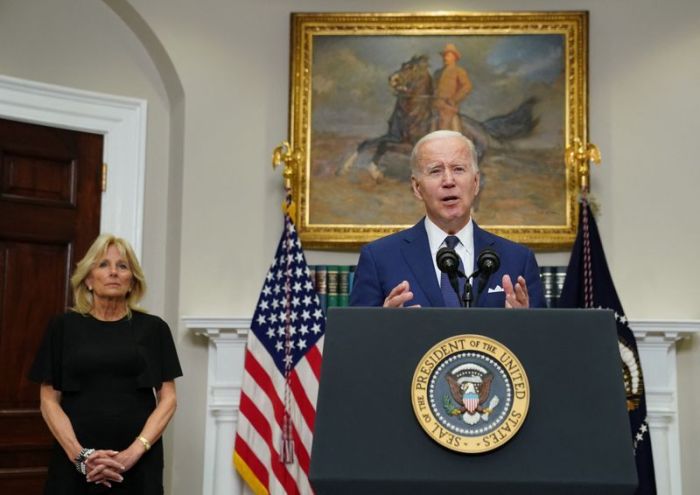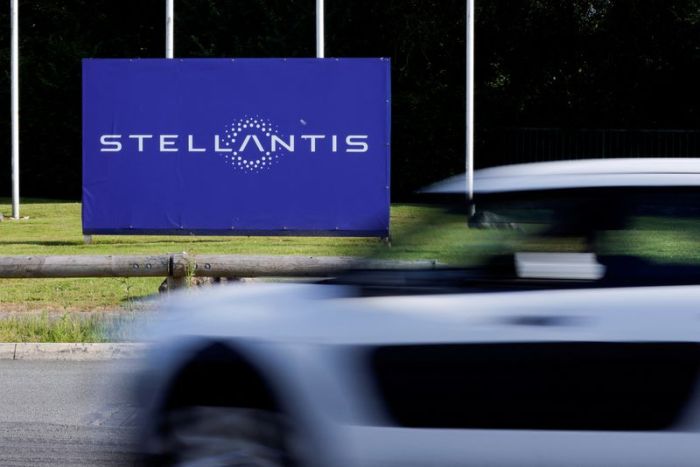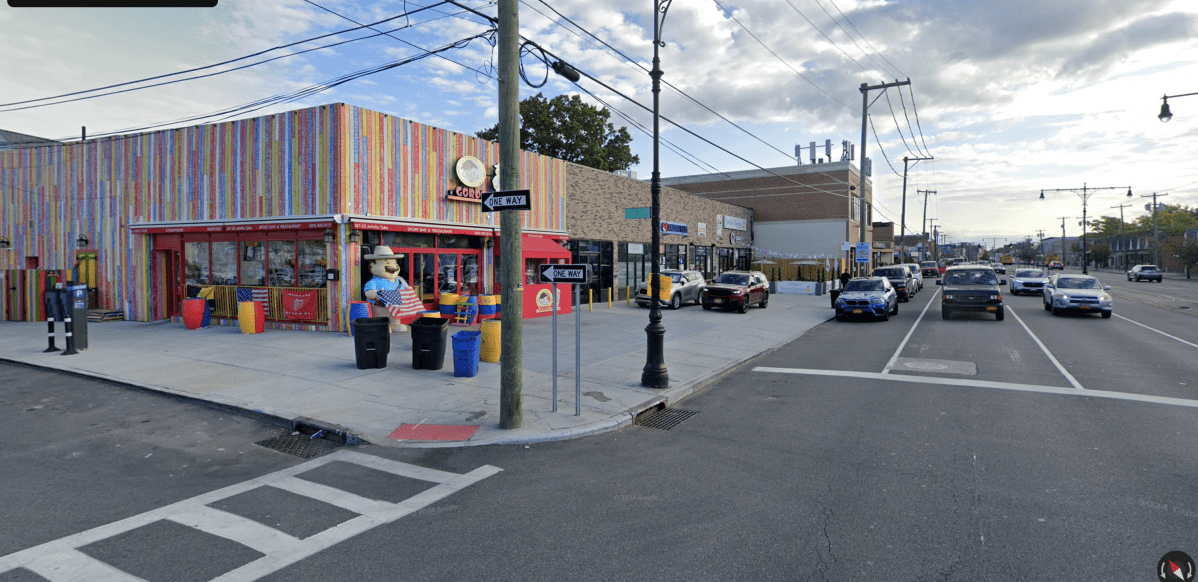NEW YORK (Reuters) – The S&P 500 and the Nasdaq finished in the red on Tuesday as worries that aggressive moves to curb decades-high inflation might tip the U.S. economy into recession dampened investors’ risk appetite.
All three major U.S. stock indexes pared their losses in afternoon trading, with the blue-chip Dow turning positive. Even so, the S&P 500 ended just 2.2 percentage points above confirming it has been in a bear market since reaching its all-time high on Jan. 3.
“As we step back and acknowledge the primary market
catalysts, it’s really been about the Fed pivot and the change
in interest rates, which have influenced prices across the
capital markets,” said Bill Northey, senior investment director
at U.S. Bank Wealth Management in Helena, Montana.
“In the last two weeks, we’ve seen some degree of
macroeconomic deterioration starting to be manifested in
corporate earnings and economic releases.”
Much of the sell-off was driven by a profit warning from
Snap Inc, which sent the company’s shares plummeting
43.1%, sparking contagion throughout the social media segment.
Meta Platforms Inc, Alphabet Inc, Twitter Inc and Pinterest Inc were down between 5% and 24%, and the broader S&P 500 Communications Services sector slid 3.7%.
Global supply chain disruptions have been exacerbated by
Russia’s war with Ukraine and restrictive measures in China to
control its latest COVID-19 outbreak, sending inflation to
multi-decade highs.
The U.S. Federal Reserve has vowed to aggressively tackle
persistent price growth by hiking the cost of borrowing, and
minutes from its most recent monetary policy meeting, expected
on Wednesday, will be parsed by market participants for clues
regarding the speed and extent of those actions.
Investors currently expect a series of 50-basis-point rate
hikes over the next several months, fueling fears that the
central bank could push the economy into recession, a scenario
that is increasingly being baked into analyst projections.
“Tomorrow we look to the FOMC minutes for any signs that the
approach to monetary policy may lean further hawkish or dovish
than was laid out at the last meeting,” U.S. Bank Wealth
Management’s Northey said.
Data released on Tuesday painted a picture of waning
economic momentum, with new home sales plunging and business
activity decelerating.
Fed Chair Jerome Powell’s counterpart in Frankfurt, European
Central Bank President Christine Lagarde, said she expects the
ECB deposit rate to be raised at least 50 basis points by the
end of September,
The Dow Jones Industrial Average rose 48.38 points,
or 0.15%, to 31,928.62; the S&P 500 lost 32.27 points, or
0.81%, to 3,941.48; and the Nasdaq Composite dropped
270.83 points, or 2.35%, to 11,264.45.
Six of the 11 major sectors of the S&P 500 ended the session
in negative territory, with communication services and consumer
discretionary suffering the biggest percentage losses.
Apparel retailer Abercrombie & Fitch Co tumbled
28.6% after posting a surprise quarterly loss and cutting its
annual sales and margins outlook.
Work-from-home darling Zoom Video Communications Inc
jumped 5.6% following its full-year profit hike due to solid
enterprise demand.
Declining issues outnumbered advancing ones on the NYSE by a
1.28-to-1 ratio; on Nasdaq, a 2.37-to-1 ratio favored decliners.
The S&P 500 posted three new 52-week highs and 40 new lows;
the Nasdaq Composite recorded 17 new highs and 443 new lows.
Volume on U.S. exchanges was 11.78 billion shares, compared
with the 13.33 billion average over the last 20 trading days.
(Reporting by Stephen Culp; additional reporting by Devik Jain; and Anisha Sircar in Bengaluru; editing by Jonathan Oatis)


























